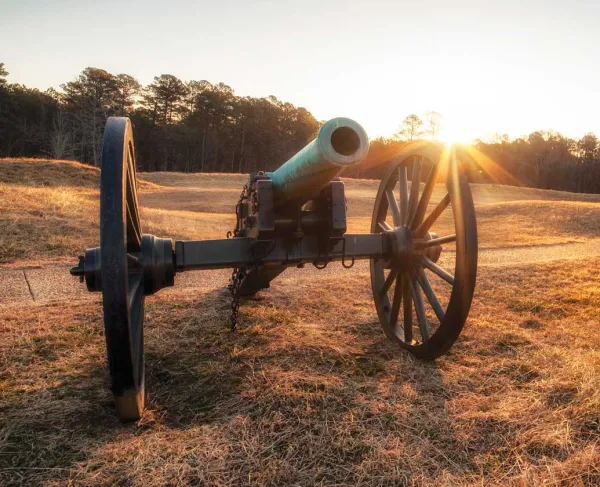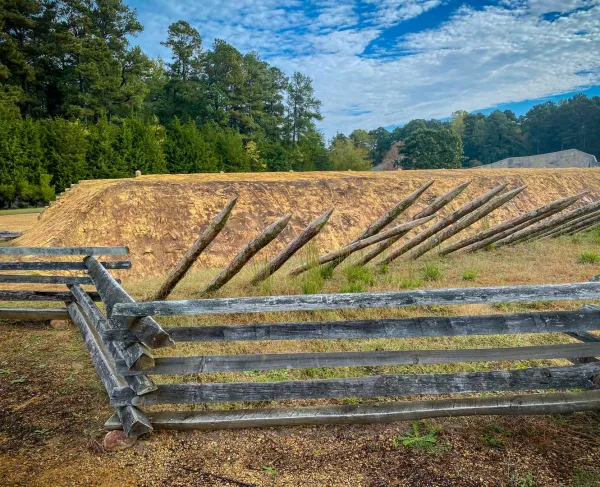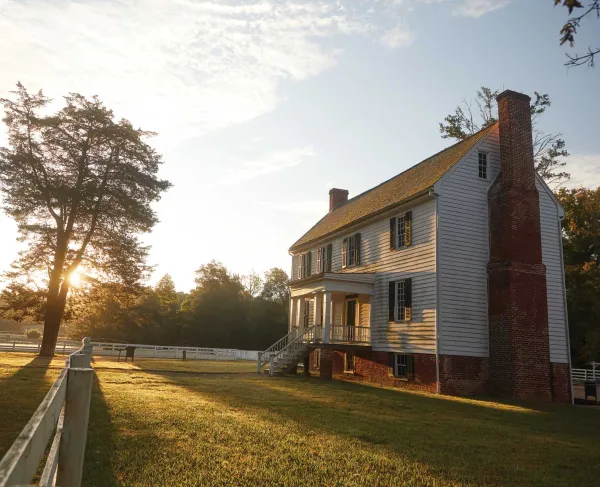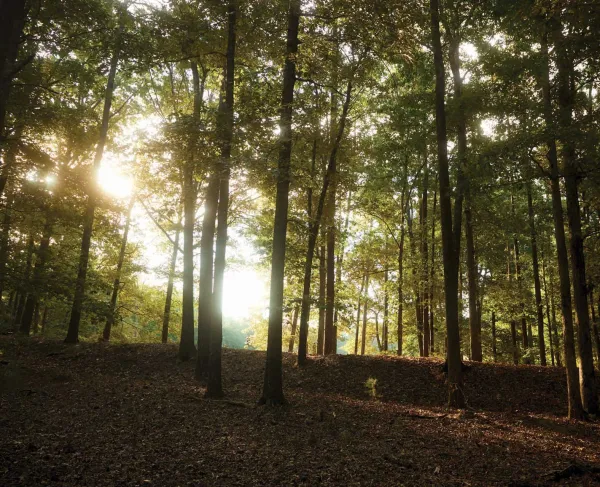
Pamplin Historical Park, Petersburg, Va.
Do you remember the field trips you went on to museums or battlefields while you were in elementary or high school? Maybe it was a historic village or coastal fort, but it probably seemed like it was always there, just for trips like yours. Unfortunately, that’s often not the case. Historic lands are continually changing, with preservation efforts that come and go. Every so often, though, an incredible steward of the land comes around and works the magic needed to make those field trips life-changing. Dr. Robert B. Pamplin, Jr., is one of those stewards.
After a failed assault by the Union army on Petersburg, Virginia, between June 15 and 18, 1864, the only way for General Grant’s troops to take the Confederate city was to dig in and wait. And wait they did: The Siege of Petersburg lasted 292 days - from June 15, 1864, until April 2, 1865. The 10 months of seemingly endless fighting covered roughly 576 square miles, with worn-down soldiers making their homes in muddy trenches and seeing only incremental gains. While the siege eventually ended with a Union breakthrough that signaled the downfall of the Confederate army, the ground these men knew so well didn’t move on with them. The land had stories to tell, and the storytellers came nearly 125 years later.
The American Battlefield Trust, then the Association for the Preservation of Civil War Sites (say that five times fast), first acquired land in the Petersburg area in 1989. The first venture was fewer than 10 total acres, but it was the first step in a long and fruitful journey. In the Trust’s research, staff realized that ancestors of Dr. Robert B. Pamplin, Jr., a businessman and philanthropist living in Oregon at the time, had owned the land during the Civil War, and contacted him.
Dr. Pamplin was thrilled at this opportunity, seeing it as a way to not only preserve the historic land, but also to educate the community. He bought the original 100-acre plot in 1991 and began restoration efforts, as well as construction on an interpretive center and trail. The Pamplin Park Civil War Site was officially opened in June 1994 with big dreams of what would come next. The plantation home of Pamplin’s ancestors on an adjacent parcel was available for sale soon after, which the Pamplin Foundation quickly purchased and began restoring to its Civil War appearance.
Over the next five years, Dr. Pamplin assembled a team at Petersburg, with the goal of transforming it into a world-class educational historic site. He brought in the right people — including former director of the Association for the Preservation of Civil War Sites A. Wilson Greene. Greene was the person who’d contacted Pamplin about the original land and worked closely with the planning team as the park grew. He became executive director in 1995, when Pamplin Park would enter its most ambitious chapter yet.
The construction of the National Museum of the Civil War Soldier was completed in 1999, a crowning achievement for the still-young park. The 25,000-square-foot facility brings visitors face to face with the nearly three million Americans who fought in the Civil War, as well as immersing guests in life-size dioramas and battlefield simulations. The museum tells the stories of more than just the leaders in battle; it tells the lives and highlights the heroic actions of oft-overlooked soldiers, civilians and enslaved people who were there.
The museum wasn’t the only thing being developed, though, and Pamplin Park expanded to include the historic Banks House, General Grant’s headquarters in April 1865, and surrounding land. Trails through the wooded areas continued to be built and maintained, leading visitors across the avenues of attack and along original Civil War fortifications. Dr. Pamplin’s dream was becoming a reality as his park became a highly regarded center for education and interpretation, not to mention a premier field trip destination for area schools and groups.
While Pamplin Park was growing, so was the American Battlefield Trust’s work in the Petersburg area. Following the initial acquisition, the Trust continued to preserve land at The Breakthrough site directly adjacent to Pamplin Park and other important battle locations in the greater Petersburg area. What started as a small plot became 439 acres by 2025 - a major success for not just the Trust, but also for all nearby parks and organizations.
The work between Pamplin Park and the American Battlefield Trust transformed The Breakthrough Battlefield, with both organizations sharing the goal of preserving and interpreting the stories the land had to tell. Starting in 2012, the Trust began a two-and-a-half-year project of restoring the 426 acres acquired at The Breakthrough. This included removing a derelict hog farm and nonhistoric railroad bed and cutting 152 acres of timber from a mismanaged lumber operation and conducting controlled burns to reveal battlefield rifle pits. The work was far from over, as these efforts were matched by the replanting of native grasses and shrubs, installation of nearly two miles of interpretative and connective trails and restoration of wetlands through vegetative tree buffers.
The land began to resemble what troops saw in 1865, and soon the sounds began to return as well. The reintroduction of open fields and native plants, coupled with responsible wetland management, provided an ideal restored habitat for Bachman’s sparrows and spotted turtles. Now, between the two parks, visitors could walk through original entrenchments on The Breakthrough Trail, complete with wayside exhibits and immersive audio messages.
In the summer of 2025, Pamplin Park was made available for sale to the American Battlefield Trust. While Dr. Pamplin had preservation at the forefront of his mind, the land itself was never formally protected. The land remains zoned for industrial and commercial development, and without the ironclad modern legal protections that Trust ownership can bring, it is at risk. Not even having been named a National Historical Landmark offers it any form of irrevocable protection. As open space across the region is gobbled up by warehouse distribution complexes and massive data centers, the painstakingly restored trails and monuments to acts of incredible courage are now facing an unknown future.
Fortunately, the American Battlefield Trust has the opportunity to protect this hallowed ground forever. Pamplin Park is already connected to the Trust’s restored land, and this acquisition can create an 857-acre unified battlefield park to continue world-class education and interpretation, and through creation of the Breakthrough Battlefield Foundation, the National Museum of the Civil War Soldier continues seamless operations in perpetuity.
Related Battles
8,150
3,236
3,500
4,250







